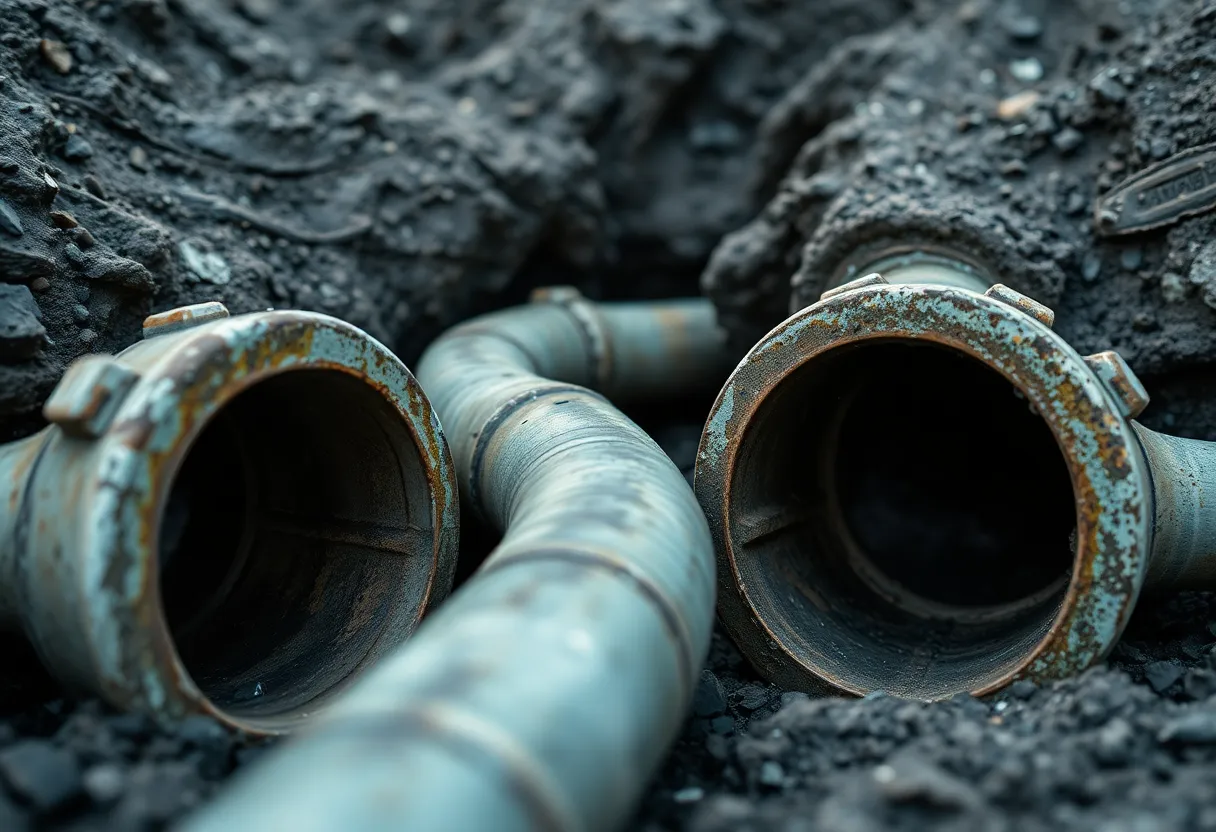News Summary
Scotland is facing a potential public health crisis as reports reveal that over a quarter of water pipes in some regions contain asbestos. This known carcinogen poses significant risks, particularly as many pipes reach the end of their lifespan, raising concerns about asbestos fibers leaching into drinking water. Health officials are divided on the dangers posed by asbestos in water, with calls for increased regulatory action and monitoring. As aging infrastructure continues to cause alarm, proactive measures are essential to safeguard public health and ensure safe drinking water.
Is Asbestos Lurking in Your Water? Scotland Faces Rising Risks from Aging Pipes
Scotland is confronting a potential public health crisis as it uncovers alarming data regarding asbestos in water pipes. Recent reports highlight that over a quarter of water pipes in certain regions contain asbestos, a known carcinogen that remains a serious concern despite being banned in the UK for more than 25 years.
Aging Infrastructure Raises Alarm Bells
Over half of the asbestos-laden pipes contribute to more than 11% of Scotland’s drinking water supply, causing significant worry among health officials and consumers alike. Many of these pipes are nearing the end of their lifespan, raising fears that asbestos fibers may leach into the drinking water as the pipes corrode.
Scottish Water, the body responsible for the water supply, projects that at the current refitting rate, it could take until 2072 to fully replace all asbestos pipes. This slow-paced replacement plan has drawn criticism, especially considering the long latency period associated with asbestos-related diseases.
The Debate Over Safety
Health officials remain divided on the real dangers posed by asbestos fibers found in drinking water. While the World Health Organisation (WHO) does not consider ingestion of asbestos a significant health risk, some experts warn that we may be overlooking a growing threat. Concerns about a potential new wave of asbestos-related cases in the UK loom, but the full extent of harm could take decades to emerge.
Despite WHO’s guidelines, which call for monitoring the presence of asbestos in drinking water, the Drinking Water Inspectorate in Scotland has not mandated ongoing testing. This lack of proactive monitoring raises essential questions about the safety of water consumed by millions of citizens.
Global Perspectives on Asbestos
Across the globe, an estimated 630,000 miles of asbestos cement pipes are buried in the US alone, with similar infrastructures existing in various other countries. Incidents like the recent water main burst in Stannington, Sheffield, serve as stark reminders of the fragility of these old pipes, which are often made of asbestos cement and are still part of the public drinking water supply.
Scientific studies indicate that pipes older than 50 years can potentially release asbestos fibers into the water. Many researchers assert that there is no safe level of asbestos exposure, even through drinking water. While some studies attempt to establish a link between asbestos exposure via ingestion and certain cancers, the results remain inconclusive, leading to further debate in the scientific community.
Calls for Action and Future Measures
In light of these findings, there is increasing pressure for regulatory action and precautionary measures to ensure public safety. Scottish Water is currently investing between £35-40 million annually in renewing their water mains and is expected to escalate the replacement of asbestos cement pipes in the coming years.
As populations grow, and existing water systems age, the risk of pipe bursts and subsequent contamination only increases. This concern necessitates vigilant oversight and proactive management of aging infrastructures.
Final Thoughts
As Scotland grapples with this growing issue, the conversations about asbestos in drinking water highlight the intricate balance between public health and infrastructure management. Continuous evaluation and upgrades to aging water delivery systems will be paramount to protecting communities from potential health risks. The journey toward a safer drinking water supply will likely be a long and challenging road, requiring collaborative efforts from all corners of healthcare, government, and utilities.
Deeper Dive: News & Info About This Topic
HERE Resources
Family Seeks Information on Asbestos Exposure After Sheffield Man’s Death
Trial of Former Free State Premier Unfolds Amid Asbestos Scandal
Family Seeks Answers Following Tragic Loss to Mesothelioma
Leeds Man’s Tragic Battle with Mesothelioma Highlights Ongoing Asbestos Crisis
DIY Home Renovations May Unknowingly Expose Young Enthusiasts to Asbestos Risks
Construction Delays Amid Asbestos Concerns at Trumbull Center
The Awful Legacy of Asbestos Exposure in Gaza: A Looming Health Crisis
Tenants Take Action: The Fight Against Asbestos Exposure
The Hidden Dangers of Asbestos in Gaza: A Looming Health Crisis
Tragic Effects of Asbestos: Appeal for Information Following Death



















